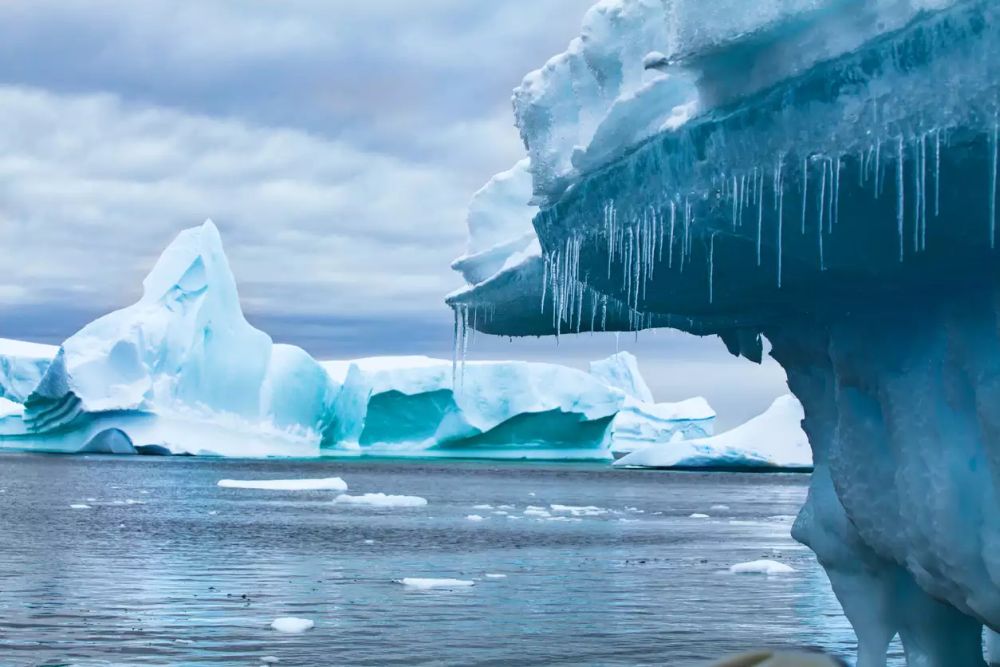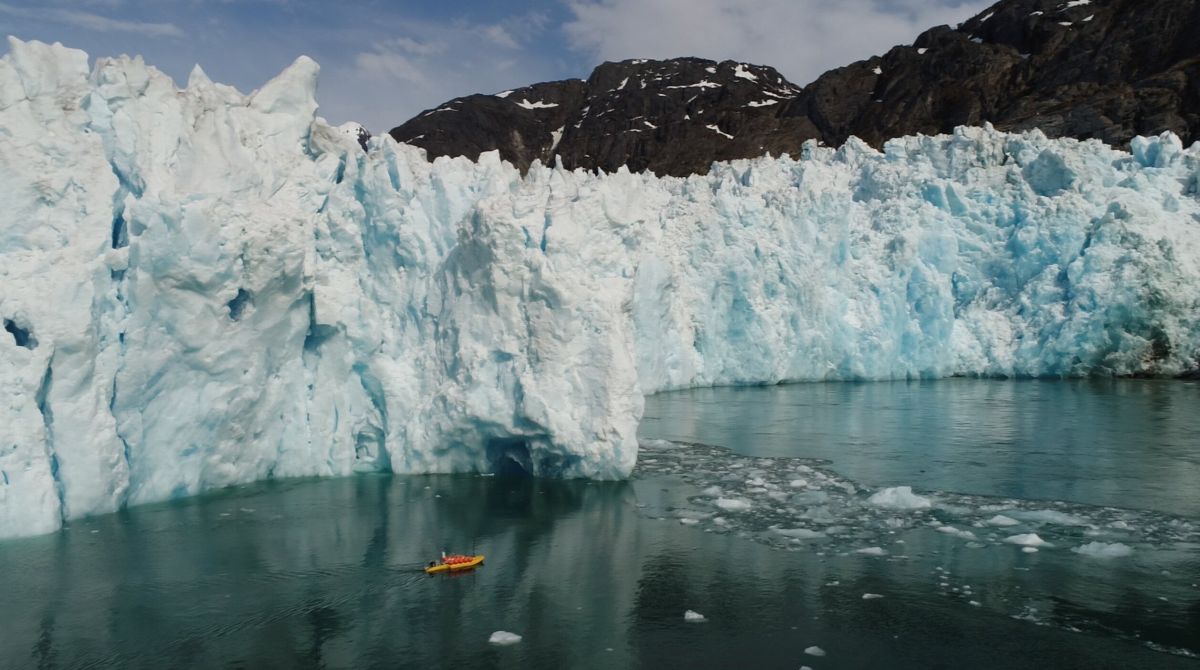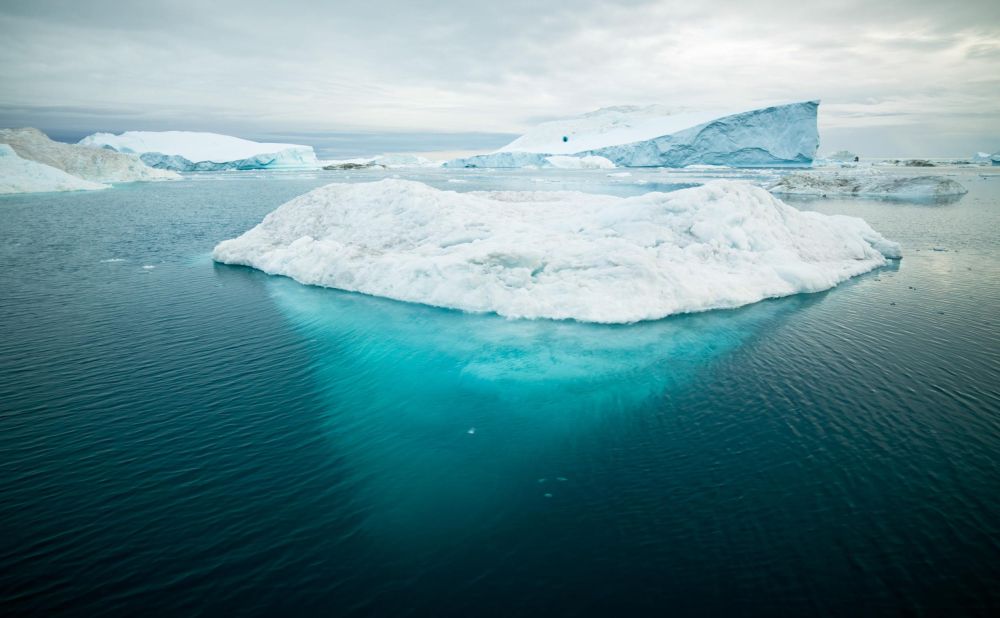Earth Losing Ice Cover at Rapid Pace – This is How We’re Placed
With each passing day, the earth is moving toward its doom. Man’s actions have induced natural calamities that are escalating, endangering the planet’s biodiversity. In a shocking revelation, a group of British scientists has discovered that about 28 trillion tonnes of ice have melted from the face of the planet since 1994.
Calling the ice loss across the earth “staggering,” the scientists found that melting glaciers and ice sheets could cause sea levels to rise drastically, probably reaching a meter by the end of the century.
To put that in context, every centimeter of sea-level rise means about a million people will be displaced from their low-lying homelands. In the past researchers have studied individual areas – such as the Antarctic or Greenland – where ice is melting. But this is the first time anyone has looked at all the ice that is disappearing from the entire planet.
Said Professor Andy Shepherd, director of Leeds University’s Center for Polar Observation and Modelling.
The rapid loss of ice mass could have dire consequences, including major disturbance to the biological health of Arctic and Antarctic waters, which could lessen the planet’s ability to reflect solar radiation back into space. According to the scientists, the findings match the worst-case scenario estimates drawn by the United Nation’s Intergovernmental Panel on Climate Change (IPCC). The vast majority of earth’s ice loss is undoubtedly a direct consequence of global warming.
Melting Greenland
In a recent paper, published in the journal Cryosphere Discussions, scientists from Leeds and Edinburgh universities and University College London reviewed the satellite surveys of glaciers, mountains, and ice sheets between the years 1994 and 2017 to record the impact of global warming. A NASA study has labeled 2010-2019 as the hottest decade ever recorded.
The research unearthed these facts a week after researchers at Ohio State University revealed that Greenland’s ice sheet might have passed a point of no return. The scientists believe that snowfall refilling the country’s glaciers each year can no longer negate the effects of the pace at which ice is melting.
This analysis concluded that the Greenland ice sheet, which is the world’s second-largest ice body, will continue to lose ice mass even if global temperatures stop rising. The researchers have deduced that all the regions have suffered disturbing drops in ice cover in the past three decades and these losses are still ongoing.

Image: Munichre
On average, the planetary surface temperature has risen by 0.85 Celsius since 1880, and this signal has been amplified in the polar regions. Both sea and atmospheric temperatures have increased as a consequence and the subsequent warming has generated the catastrophic ice losses exposed by the group.
Rising sea temperatures have been the main cause in the melting ice sheet in Antarctica, while the escalating atmospheric temperatures have been the factor of ice loss from inland glaciers such as in the Himalayas. In Greenland, ice loss has been triggered by an increase in both sea and atmospheric temperatures.
However, the team noted that not all the ice that was lost during that period would have contributed to sea-level rise. Leeds University researcher Isobel Lawrence said,
A total of 54% of the lost ice was from sea ice and from ice shelves. These float on water and their melting would not have contributed to sea level rises. The other 46% of meltwater came from glaciers and ice sheets on the ground, and they would have added to sea level rise.
The current global warming has been triggered by increasing greenhouse gas emissions from the burning of fossil fuels. In spite of the warnings from scientists, these emissions have continuously risen as global temperatures unceasingly increased.
However, this is just one of many climate-change tipping points that human activities might bring about. The volume of ice that Greenland suffers the loss of each year has gradually increased in the last two decades. Before 2000, the researchers believed that the ice sheet had an equal chance of gaining or losing mass each year. Unfortunately, the climate of the last 20 years has set such patterns in motion that it will only gain mass in every 100 years.
Also Read: Rapidly Changing Climatic Patterns Become Nemesis of the Planet
With a heatwave washing over from Europe in the summer of 2019, Greenland unloaded a huge amount of ice and water into the ocean. The ice sheet suffered the loss of 55 billion tons of water within five days – plenty to cover the state of Florida in almost five inches of water.
As the ice melts, water pools across the ice sheet and absorbs more sunlight and further heats the ice around it. It could be one of the reasons is has accelerated ice loss in Greenland to an unrecoverable tipping point. Such events can be seen in other parts of the world owing to rising global warming and certain human activities.
Even for the Greenland ice sheet, the future holds more tipping points – levels of breakdown that will quicken the glaciers’ melt even more. Restraining global warming could postpone those tipping points and give the world more time to prepare for catastrophic events of the future.
Ice Loss in Antarctica
According to scientists, Antarctic ice shelves have lost almost 4 trillion metric tonnes of ice since the mid-1990s. The increasing temperature of ocean waters is melting ice sheets from the bottom up, causing them to lose mass rapidly than they can refreeze.
This raises concerns about the plight of the hundreds of glaciers spread out along the Antarctic coastline. Ice shelves are brackets of ice that stick out from the edge of the continent into the ocean. They help keep the glaciers stable while holding them in place.

Image: Phys.org
Scientists have grown more troubled about the loss of the Antarctic ice mass in recent years. Research progressively indicates that ice shelves in certain regions of the continent — specifically in West Antarctica and parts of the Antarctic Peninsula — are melting and thinning from the bottom up.
The new study noted that the fastest-melting areas are primarily ice shelves protruding into the Amundsen and Bellingshausen seas, which back up to the coast of West Antarctica and the western side of the Antarctic Peninsula.
Also Read: NASA Reveals Shocking Before and After Images of Melting Antarctica
Various studies reevaluate the estimates of how much sea levels will rise by 2100 downward, suggesting that Antarctica could contribute somewhere between about three to 16 inches to the world’s oceans under the “worst-case” scenarios.
The southern polar ice sheet’s losses are the aftermath of melting effects of warmer ocean waters plundering its edges. The northern polar ice sheet feels a similar sort of attack but is also experiencing surface melt from warmer air temperatures.
Melting Glaciers Across the World
A team of oceanographers and glaciologists have discovered that some glaciers are melting a hundred times faster than scientists believed earlier. According to Twila Moon, a glaciologist at the National Snow and Ice Data Center at the University of Colorado-Boulder, the melt that is happening is rather dramatically different from some of the expectations the scientists had. The pace at which ice sheets are melting is quite frightening.

Image: Climate Foresight
While some of this glacial melt is a normal process, which glaciers undergo during seasonal shifts from winter to summer, the warming climate has accelerated glacier melting many-folds across the globe. The melting of ice sheets is happening both above and below the surface.
In the Arctic, ice melt is uncovering permafrost – frozen soil that releases powerful greenhouse gases when it melts. If enough permafrost melts, the gases released will trap heat faster than human-induced carbon emissions.
Meanwhile, Himalayas have been rapidly losing ice mass for the past 40 years. Himalayan glaciers supply meltwater to densely populated areas in South Asia. Given the complex monsoon climate in the Himalayas, dominant causes of recent glacier changes remain undetermined, although atmospheric warming and precipitation changes have been suggested as important factors.
Recently, the United Nations weather agency said that planetary temperature could increase by 1.5 degree Celsius within next five years. According to the Paris Agreement, the 1.5 mark is the level to which nations have agreed to limit the emissions. But if this level is crossed in coming years, earth will become a hot-bed.
The ice loss across the earth has reached an irreversible point, which has only been made worst by climate change. If these climatic changes do not get under control, soon the earth will be a huge pool of water or could be a ball of scorching heat – that is a bit uncertain.


